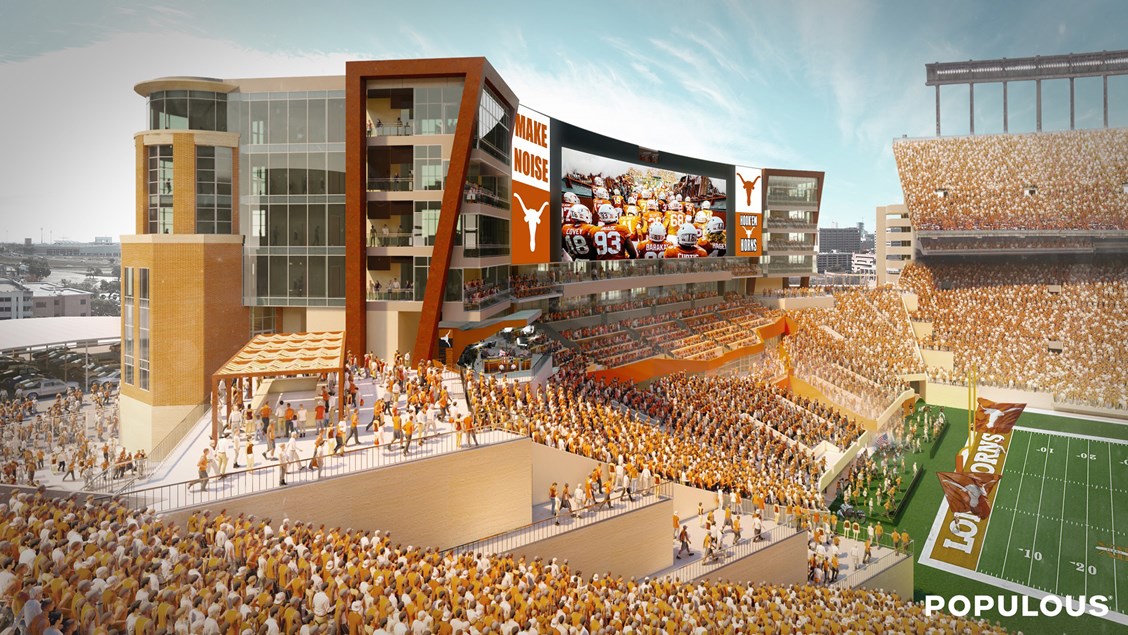We end 2018 with a countdown of the 10 biggest stories of the year on Football Stadium Digest, as chosen by editors and partially based on page views. Today, #7: End zone development becomes a potent force in college-stadium design.
Traditionally the forgotten area of the traditional horseshoe stadium design, end zone development in college-football facilities became a major factor in 2018, rising to an exalted status in design.
You see the traditional horseshoe design throughout NCAA football, in stadiums both old and new, ranging from Ohio Stadium (which opened in 1922) to TCF Bank Stadium (opening in 2009). There is an advantage to the horseshoe: most seats are facing the action, even those in the corners and at the top of the curved horseshoe. And even in college football stadiums with a different design–whether it be two main grandstands along the field, a designed implemented in venerable facilities like Husky Stadium, or the traditional oval bowl–the areas in the end zones, particularly at the top of the horseshoe, tend to be underutilized.
But a huge trend emerging in 2018 takes this underutilized area and turns it into a multiuse space that acts on fan-experience trends like social spaces while beefing up team performance facilities. Consider it a move on the lucky portion of the horseshoe: the top of the horseshoe is open, as that is where the luck enters.
Notable end-zone developments in the college ranks included an end-zone expansion of University of Arkansas’ Donald W. Reynolds Razorback Stadium and an ongoing expansion of the University of Iowa’s Kinnick Stadium set to be completed in 2019, and an upcoming renovation to Ross-Ade Stadium at Purdue University. (You can read more about end zone development here.)
And the most notable end-zone development in the works? The upcoming DKR-Texas Memorial Stadium expansion and renovation at the University of Texas, shown at the top of this page. The $175-million expansion and renovation will take place on the stadium’s south end. The design of the new south end zone will fully enclose the stadium for the first time in DKR-Texas Memorial Stadium’s 95-year history, carrying over the architecture of the north and east sides through new entry towers and filling in the corners with concessions-equipped terraces. One of the project’s crown jewels lies inside the seating bowl. A Longhorn-shaped balcony designed into the end zone seating will be visible from the air and is the first time a logo will be carved into a seating bowl. Along with new facilities for coaches and student-athletes, the space will include a student seating section with multiple corner patios, providing a unique game-day vantage point. Construction on the seats, clubs and additional amenities will be completed by kickoff in 2021.
There’s no doubt other colleges are looking at upgrading their end-zone facilities: that area of the stadium represents some prime real estate just waiting to be developed. Look for several new similar developments to be proposed in 2019.
Here’s our Top Ten of 2018 to date:
Best of 2018, #8: Ravens Continue M&T Bank Stadium Upgrades
Best of 2018, #9: Shad Khan’s Wembley Stadium Offer Stalls
Best of 2018, #10: University of South Alabama’s New Stadium Moves Forward

